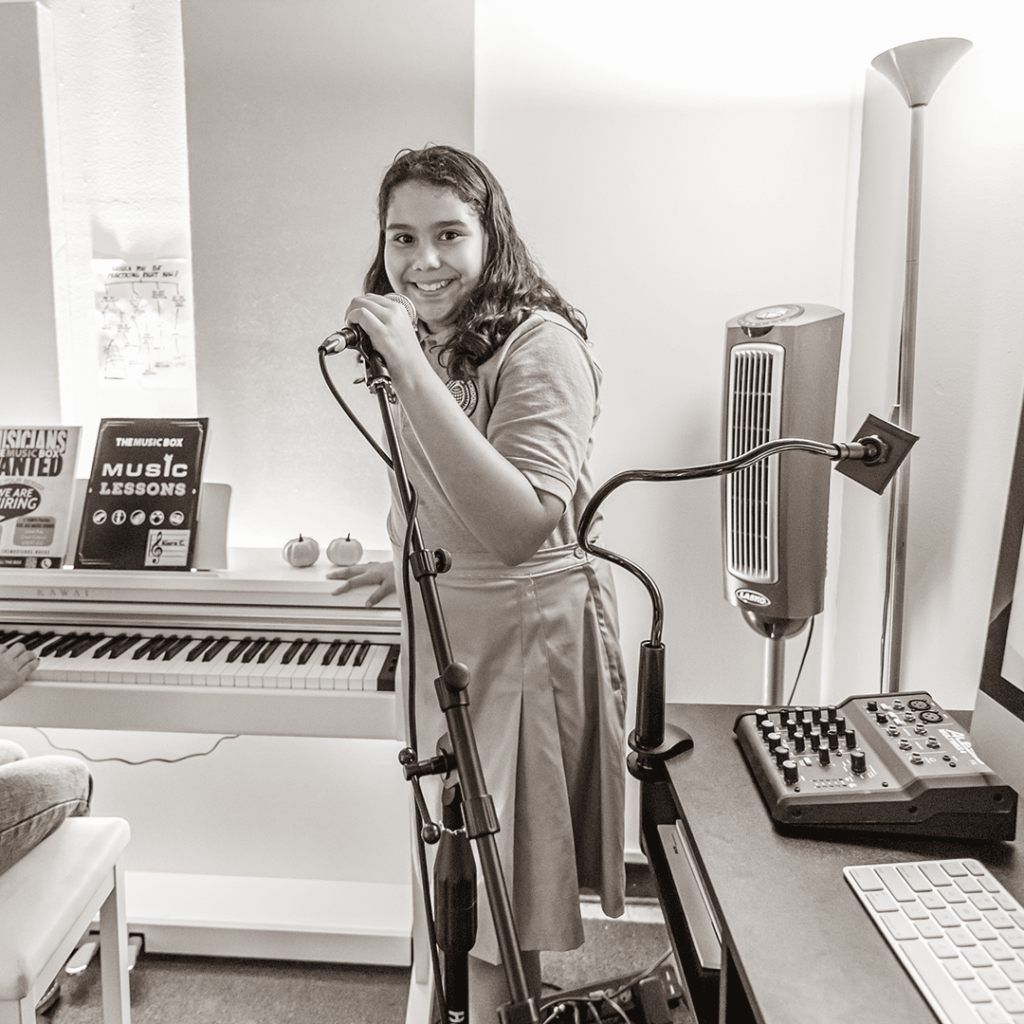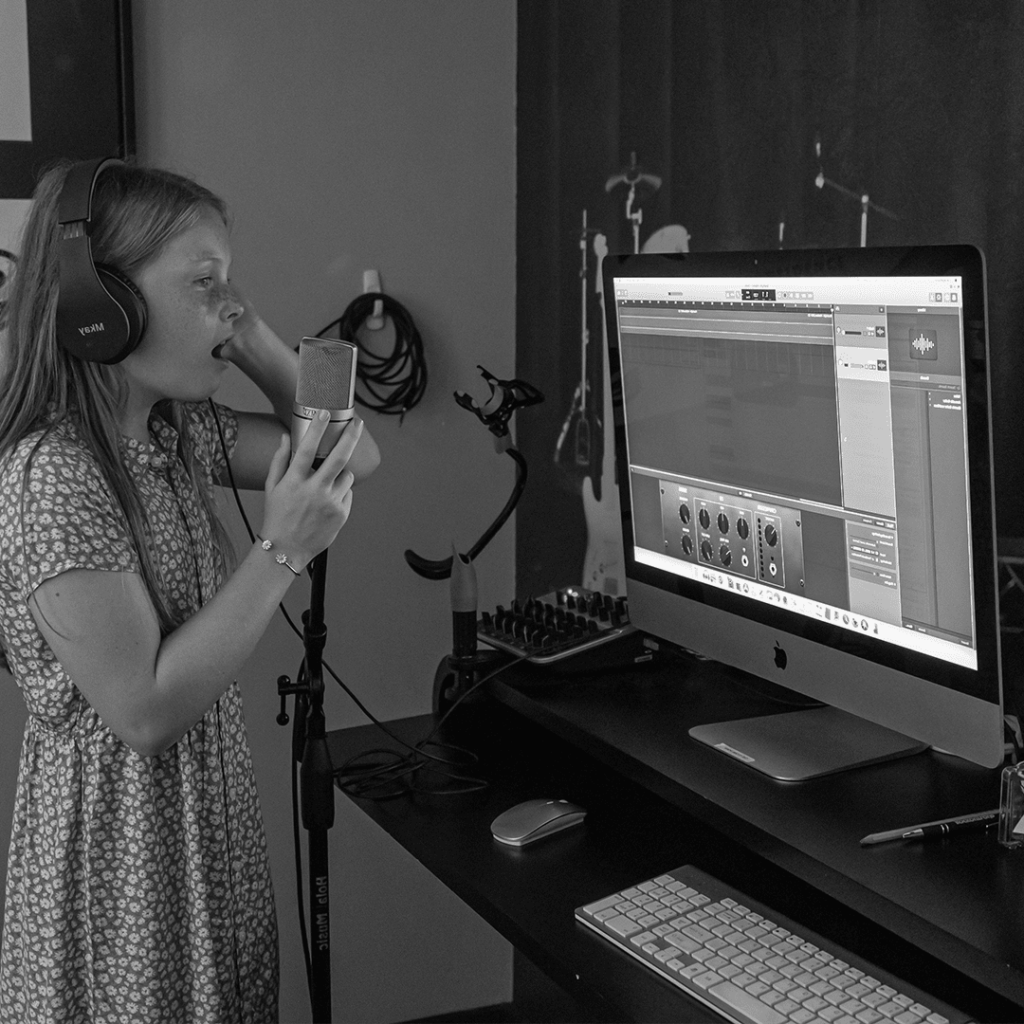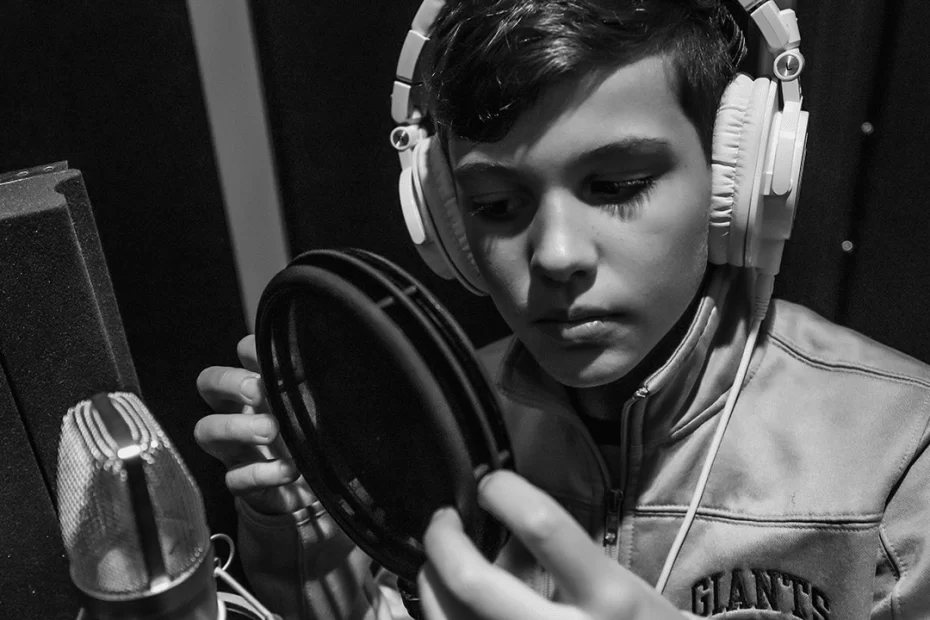Whenever people hear a singer with a gorgeous, powerful voice rocking out, most initially think “This has to be a talent.” Although talent does play a bit of a role, all professional singers have trained their voices to perfection. More importantly, they’ve all mastered one skill that allows them to sing so great – diaphragm singing.
We’re The Music Box, Tampa’s premier vocal coaching school, and we specialize in helping kids, teens, and adults become proficient singers. Whether you wish to learn how to improve your voice or train to become a professional in the music industry, our vocal coaches will ensure you reach your goals, and then some.
Our expert singing coaches have taught countless children how to sing, and one of the first lessons in our curriculum is diaphragm singing. Feel free to swing by our TikTok page if you want to see videos of our students performing the lessons they’ve learned at The Music Box.
Today, we want to help you understand how crucial this skill is and how it helps keep the singer’s vocal cords undamaged (as opposed to throat singing), so without any further ado, let’s begin.
What is Diaphragm Singing?
Contrary to what its name implies, “diaphragm singing” does not mean singing from your diaphragm. This skill revolves around utilizing your diaphragm muscle to manage your breathing and blend it with your singing more efficiently.
In simple terms, singing is similar to talking – you’re breathing out when you do it and won’t be able to continue as soon as you run out of air. Untrained singers usually sing without deploying any special skills, or in other words, they sing by simply pushing the air out from their lungs into their throats, which can have severe consequences on the vocal cords and throat muscles.
Diaphragm singing is a technique designed to prevent those negative side effects and allow the singer to have significantly better control over how they use the available air.
How to Perform Diaphragm Singing Techniques?
To be able to utilize your diaphragm when you’re singing, you’ll need to “train” it. But, before you can even do that, you’ll need to know where your diaphragm is. It’s a large respiratory muscle shaped like a dome. It is located right underneath the lungs.
Even without giving this much thought, your diaphragm will naturally contract and become slightly flatter while you’re breathing in and expand as you’re breathing out. The key to utilizing diaphragm breathing in singing is fine-tuning these movements.
We help our students learn and improve their diaphragm singing techniques with a variety of exercises that anyone can do everywhere. For immediate beginners, we start by coaching them to utilize their full lung capacity before moving on to exercises that work toward improving their breathing capacity and stamina.

Consistent Training & Practice – the Key to Mastering Diaphragm Singing
As we mentioned, the diaphragm is a muscle. Like all other muscles, it can become stronger and more refined with practice, or degrade if neglected in training.
Before we jump into some of the most valuable diaphragm singing exercises you can do at home before you enroll in The Music Box, we’d like to emphasize the importance of training consistency.
Our students are working their hardest while practicing and singing at The Music Box, but they’re also practicing at home, on their way to (and back from) the school, and whenever they have the time to train their voices. You can check out how far they’ve come in merely a few short weeks on our Facebook page.
Simple Diaphragm Singing Exercises
One of our main goals at The Music Box is to show our students that anyone and everyone can become a good singer. That’s why we’ve put such a strong emphasis on diaphragm breathing and singing exercises from early on.
The majority of these basic exercises aim to help the students control the involuntary diaphragm movements, allowing them to bend this muscle at will. Inhaling while focusing on keeping the stomach flat and tucked in, breathing through individual nostrils one at a time, and various breath-holding exercises are just the start, but they’re enough to help our singers preserve their vocal cord health.
How Can Diaphragm Singing Help Keep Vocal Cords Healthy?
A study was published in the Journal of Voice back in 2017, combing through more than 3,300 case studies regarding vocal misuse and/or overuse in singers.
While many professionals suffer from laryngeal pathologies because they’re singing when they should be resting, a lot of singers have developed similar symptoms because they haven’t worked on their diaphragm breathing techniques enough.
At The Music Box, we put the safety of our students first. Throat singing exerts too much pressure on the throat, but even more importantly, singers are often in a situation where they’re short of breath. During this time, they’re singing with “dry” throats – this results in a “scraping” sensation, which is mostly the result of the lungs trying to push out the air that simply isn’t there.
With diaphragm singing techniques, our students are learning to make better use of their voices and vocal cords. They learn how to inhale more air in less time and optimize its use without damaging their vocal cords. Come and check us out on Instagram if you want to learn more.

Ready to Start Learning? Join The Music Box and Take Your Singing to the Next Level
Singing can be a lot of fun, but it’s far from being easy. While other musicians can rely on their instruments to produce music, vocalists are using their actual bodies to sing. If you want to learn how to do it the right way and eliminate all the risks to your vocal cords, let us welcome you to The Music Box.
We’re headquartered at 4321 Gunn Highway in Carrollwood, Tampa, Florida, so whenever you feel ready to begin your singing journey, swing by or give us a call. If you’d rather enroll online, just follow this link, and we’ll help you through the rest of the way.



